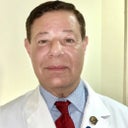Answer is - NO. Filler is stable, even with high energy devices such as RF, or even RF subcision using devices such as the InnoPlus. IN CA, Dr Emer and Dr Peter Rullan are experts in this field .Acne scar revision comprises of many specialised procedures that are dependent on the skill sets of your Plastic Surgeon or Surgical Dermatologist. For the best results, one should target the acne scar type with an appropriate treatments METHOD. Using one or two devices is not optimal. Everyone has a unique pattern of acne scars- hence the best solution is a tailored one. Remember, scar revision is a medical procedure- much like the revision of inflammatory, traumatic and burn scars. It is not dependent on the clinic, branch, machine, or laser but by the skill and reputation of the surgeon. The surgeon MUST be skilled to deliver all forms of dermal fillers, and or autologous collagen- tissue matrix. The use of fillers, both on label and off label via needle and cannula techniques will usually give better results, and less downtime compared to lasers and energy devices. Scientific papers have recently confirmed the change in paradigm for acne scar revision.

